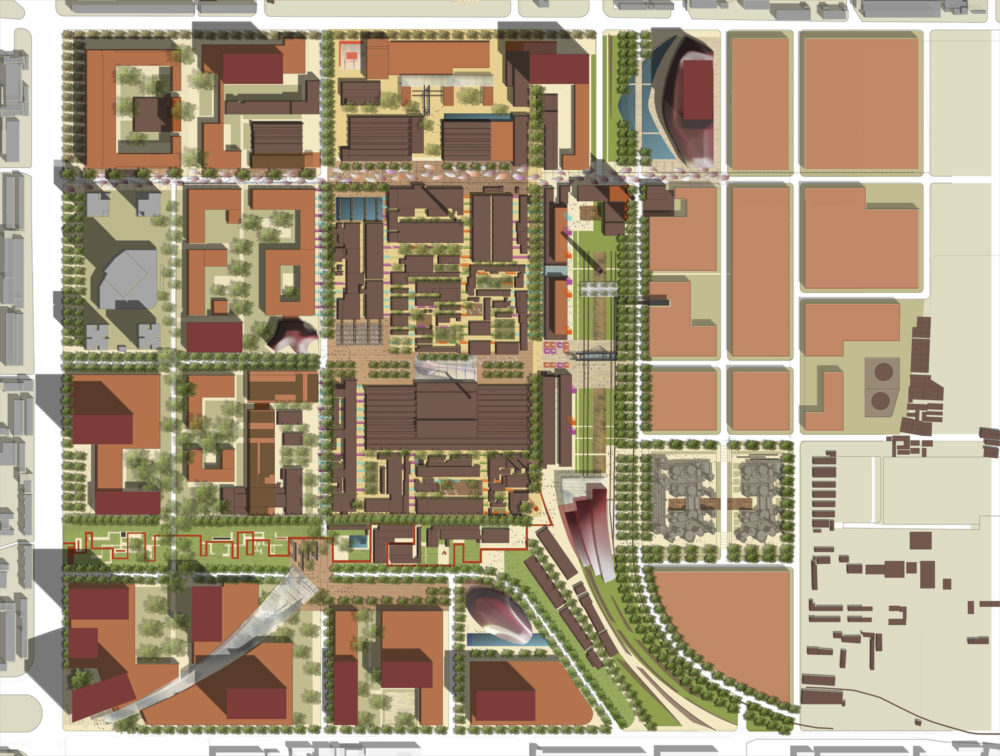
798 Arts District Vision Plan
Beijing, China
 Sasaki
Sasaki
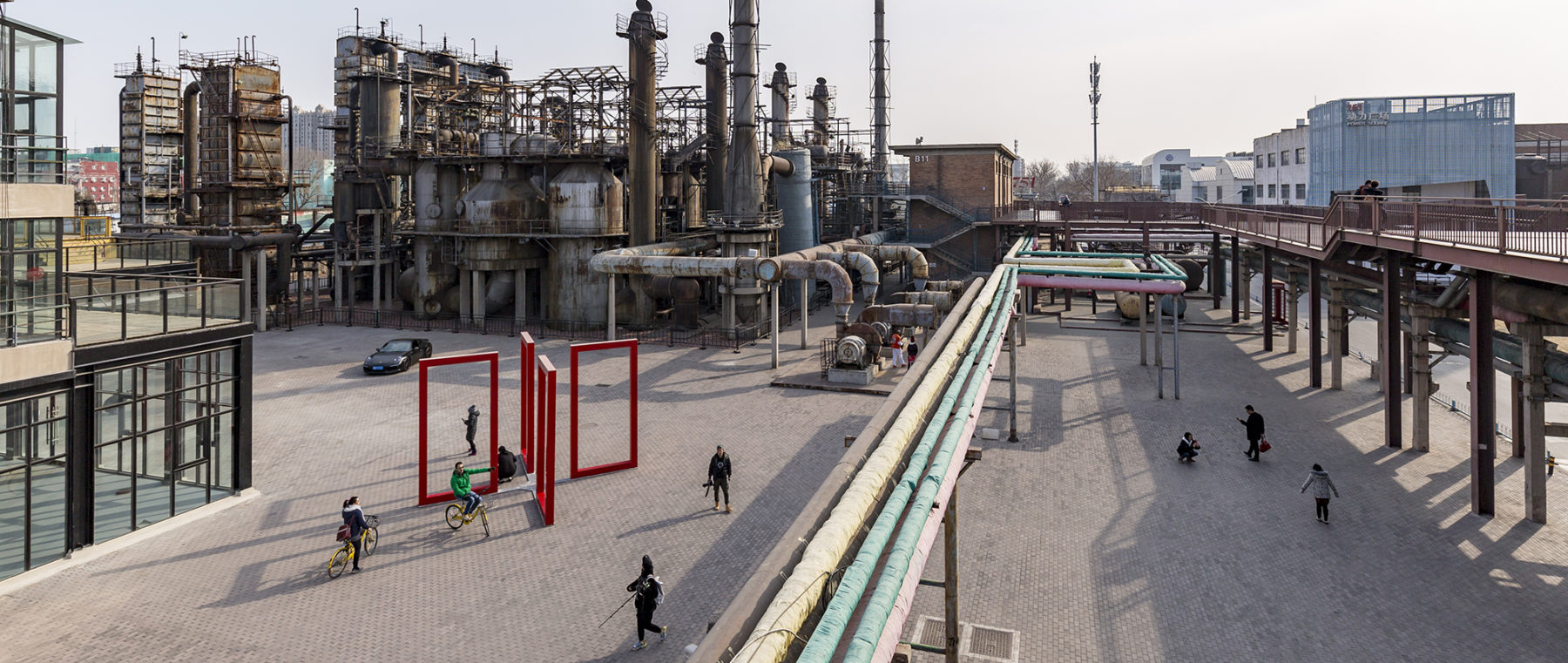
BOSTON, MA (MAY 24, 2021) – Sasaki, a leading global design firm with offices in Boston, Denver, and Shanghai, today announced that one of the firm’s projects, the 798 Arts District in Beijing, China, has won a 2021 Asia Pacific Urban Land Institute (ULI) Excellence Award, with two additional Sasaki projects named as finalists: Xuhui Runway Park in Shanghai, China, and Jiading Central Park, also in Shanghai. The winners were selected out of a record 81 submissions, marking a significant achievement for the firm.
Sasaki is one of only two firms this year to have had three projects honored as finalists by ULI, one of the most prestigious awards programs within the urban development field. The winners were honored today at ULI’s hybrid Asia Pacific Summit for their comprehensive level of quality and innovative approaches to design and development.
“Sasaki has been practicing in the Asia Pacific region for more than 50 years, and in mainland China for 25,” says Michael Grove, FASLA, principal and Chair of Landscape Architecture, Civil Engineering, and Ecology. “To see our work celebrated for its focus on placemaking, its positive benefit to the community, and its economic success and market impact is a testament to our stewardship of the public realm in cities across the region. We are grateful to our clients for trusting us with these incredible design opportunities, and couldn’t be prouder of the outcomes and of this recognition by ULI.”
More information about each of the Sasaki projects honored can be found below:
Before its evolution into a more open economy, China’s state-owned factories were identified by number. In Beijing, factory 798 and a collection of others around it once made weapons components. Today, they are the epicenter of China’s contemporary arts community. But in 2004, the district faced destruction in the name of progress.
No longer used for manufacturing, the government considered the factories obsolete– a low density waste of space in a city that needed to build vertically. Although the factory buildings were clearly a unique architectural aesthetic, Beijing valued its rich ancient history and bold contemporary architecture but ignored its mid-century industrialism, and a decision was made to demolish the district.
Public outcry, however, was relentless, and prominent cultural organizations from around the world spoke up. An unlikely duo including a government-led consortium acting as stewards of a pension fund for former factory workers, and a Belgian philanthropist who had amassed the world’s largest collection of contemporary Chinese art, commissioned a master plan which sought to repurpose the district into a stable source of revenue while providing a much-needed destination for China’s burgeoning arts scene.
During more than a decade, 798’s abandoned factory buildings have been transformed into new museums, galleries, and cafes. Fallow fields and once hidden courtyards have reemerged as settings for outdoor sculpture, fashion shows, and other cultural events. What began as a small collection of ephemeral studios and other work spaces has become the third most visited destination in Beijing, after the Forbidden City and the Great Wall.
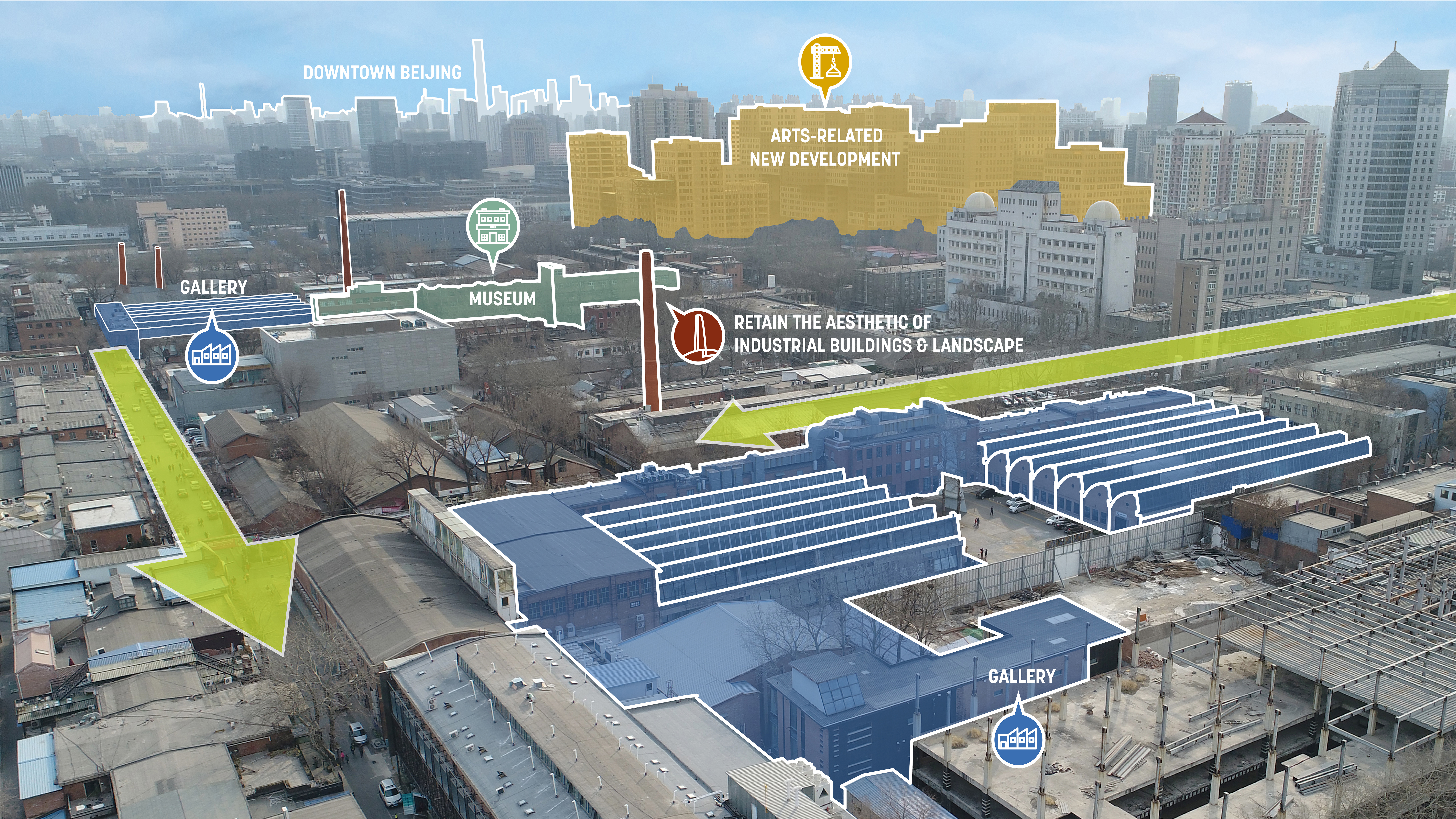
798 Arts District, 2021 Asia Pacific Urban Land Institute (ULI) Excellence Award, Winner
Xuhui Runway Park was built as a catalyst for the urban regeneration of Shanghai’s Xuhui Riverfront District. By establishing a state-of-the-art public realm at the heart of this former industrial district, the park has set a new model for innovative urban revitalization. With a design that mimics the motion of a runway, diverse series of linear spaces for vehicles, bicycles, and pedestrians organize the park and street into one interconnected sequence. This “runway of modern life,” offers recreational space for nearby office workers, students, and residents, and provides respite from the surrounding high-density redevelopment.
The project’s design promotes public transit, bicycle use, accessibility, community programming, as well as stormwater mitigation, habitat creation, material preservation and reuses. These strong sustainable initiatives have led to the park’s recognition as the first SITES Gold certified landscape in mainland China. The Xuhui Runway Park project transcends time and space, blending the site’s celebrated past with the contemporary urban center while setting a new standard for the reclamation of public space in Shanghai.
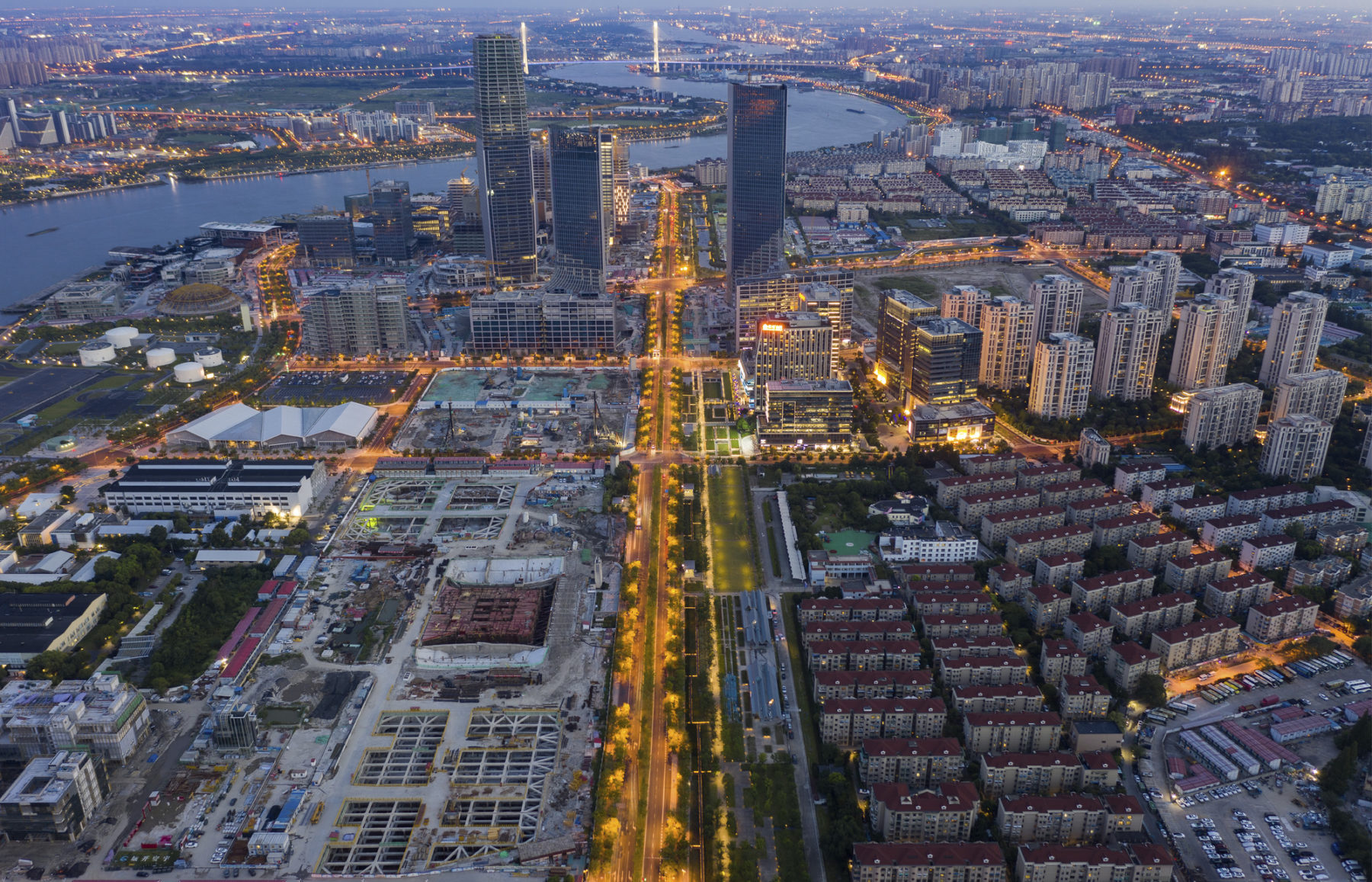
Xuhui Runway Park, 2021 Asia Pacific Urban Land Institute (ULI) Excellence Award, Finalist
Urban expansion is impacting nearly every city in Asia. When limits of density and space are reached, designers, developers, and city officials are confronted with the question of how peri-urban areas can be co-opted to augment the city center. Jiading, a high-density mixed-use district on the outskirts of Shanghai with a population of 155,000 people, is a prime example. The satellite of a major metropolis, it is marketed as a neighborhood with fewer crowds, better amenities, and a healthier environment. Bolstering its case for livability is the 70 hectare Jiading Park, which was envisioned as the catalyst for the district’s growth and built prior to the surrounding development. Today, Jiading Park is a beloved open space in this rapidly expanding precinct, and is at the core of Jiading District’s identity and ethos.
The initial design brief for Jiading Park called for a radical transformation. In its existing state, the site was comprised of factories, warehouses, and fallow agricultural fields. Canals showed signs of eutrophication – the presence of excessive amounts of nutrients – causing an explosion of algal blooms and posing a public health hazard. The new park would have to not only reverse the negatives, but in turn reposition the site into a significant recreational space and lifestyle amenity. To do this, the landscape architects expanded the agenda to include an in depth review of the urban design of the entire district, as well as a comprehensive study of the site’s ecological systems. The goal was to conceive an immersive biophilic experience where natural capital could be restored.
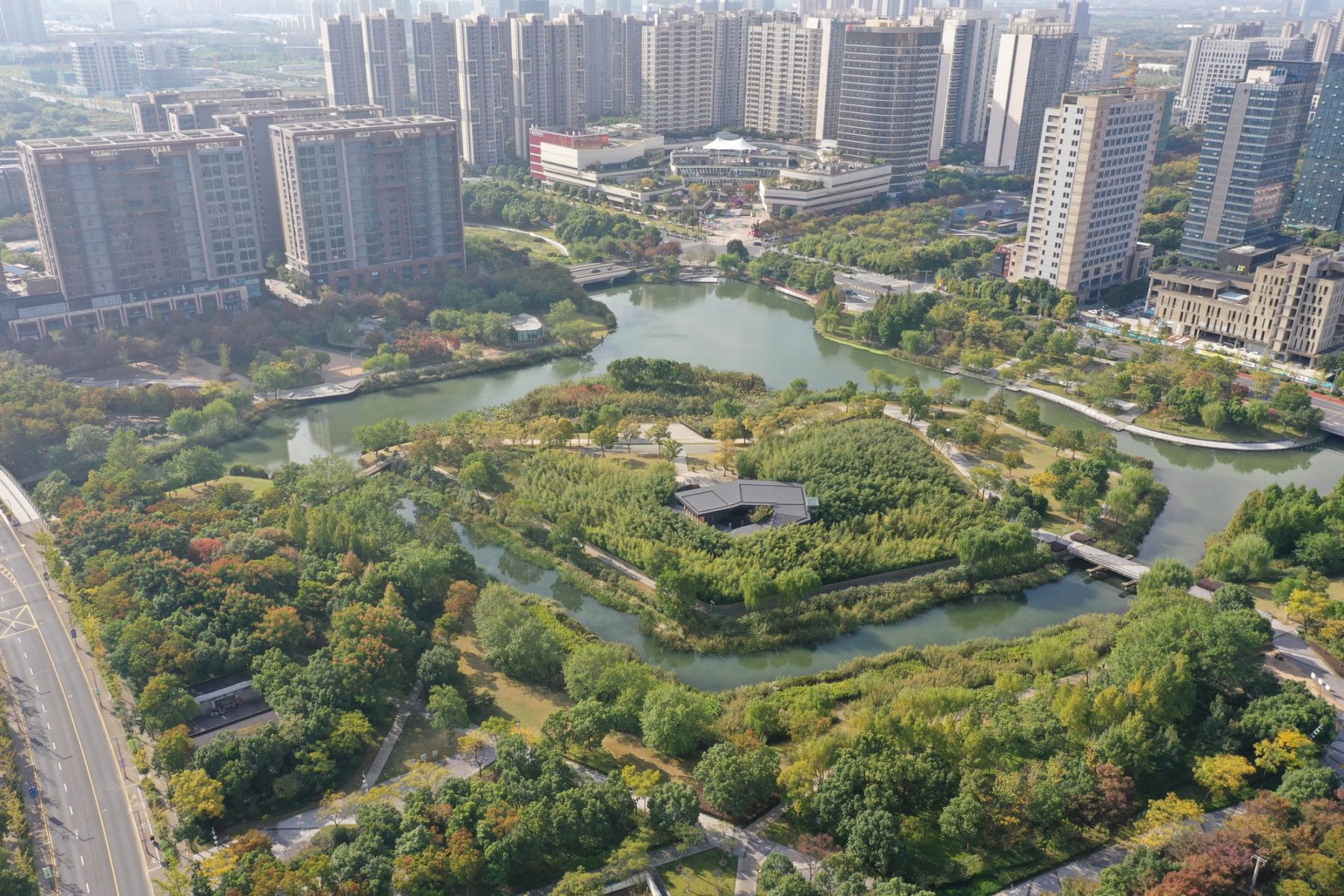
Jiading Central Park, 2021 Asia Pacific Urban Land Institute (ULI) Excellence Award, Finalist